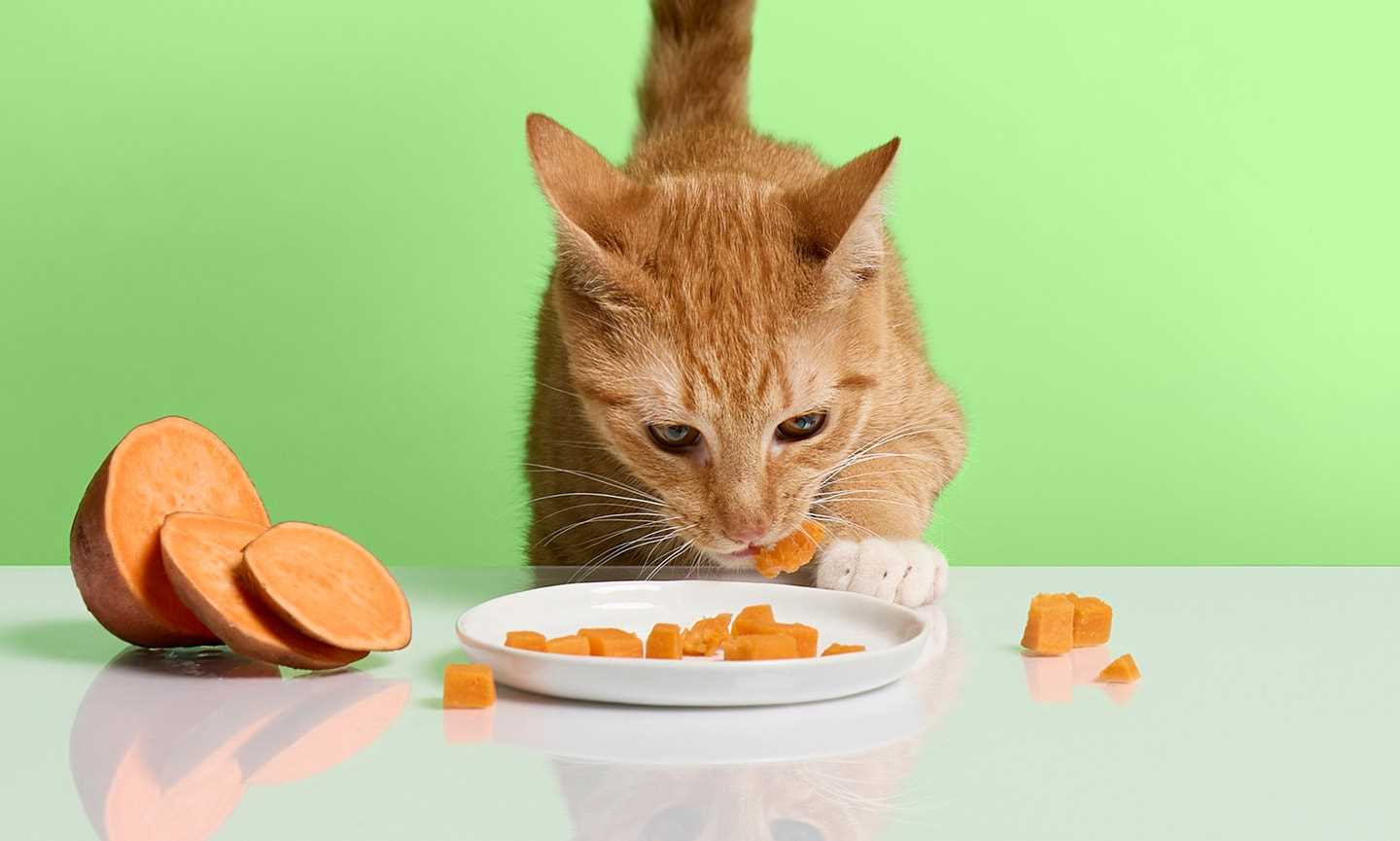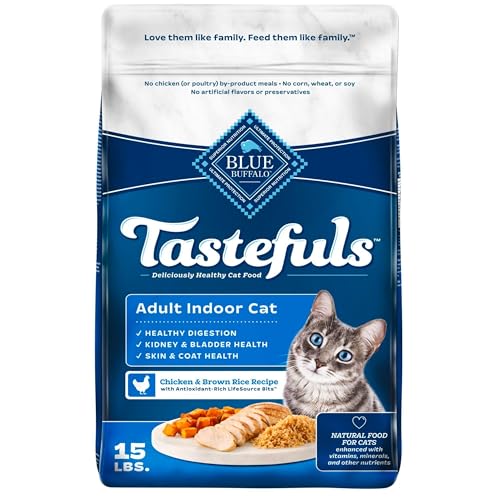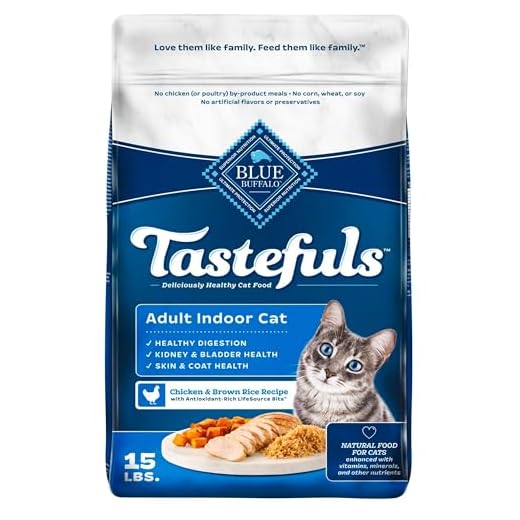




If your feline friend is struggling with low iron levels, selecting the right nourishment can make a significant difference in their health. This article provides targeted insights and recommendations on suitable diets that can help boost iron levels, improve overall vitality, and enhance your pet’s well-being.
In this piece, I will explore various types of nourishment that are particularly beneficial for felines experiencing iron deficiency. You’ll find detailed descriptions of ingredients to look for, as well as those to avoid. Additionally, I will share tips on how to incorporate these dietary choices into your pet’s routine.
This information is especially useful for pet owners concerned about their companion’s health or those seeking to improve their diet. With proper guidance, you can support your furry companion’s condition and ensure they thrive.
Best Options for Cats with Low Iron Levels
High-quality protein sources are imperative for felines experiencing low iron levels. Look for meals that contain real meat, such as chicken, turkey, or beef. These ingredients are rich in heme iron, which is easily absorbed by the body and supports overall health.
Incorporating organ meats, such as liver, can significantly boost iron content in the diet. These nutrient-dense options not only provide iron but also essential vitamins and minerals that enhance well-being. A balanced mixture of proteins, fats, and carbohydrates is necessary to ensure that all dietary needs are met.
Nutritional Considerations
When selecting nutrition, consider the following components:
- Iron Content: Look for formulations specifically designed to increase iron levels.
- Vitamin B12: This vitamin aids in red blood cell production and is crucial for maintaining energy levels.
- Folic Acid: It plays a role in producing hemoglobin and can support overall blood health.
- Omega Fatty Acids: Beneficial for skin and coat health, these can also contribute to a stronger immune system.
Additionally, always consult with a veterinarian before making significant changes to dietary habits. They can provide tailored advice based on specific health needs and conditions.
Monitoring hydration is similarly important. Ensure access to fresh water at all times, as proper hydration supports overall bodily functions and assists in nutrient absorption.
Lastly, consider gradual transitions to new meals to avoid digestive upset. Introduce new options slowly, mixing them with the current diet to facilitate adaptation.
Understanding Anemia in Cats and Its Causes
Anemia is a condition characterized by a deficiency of red blood cells or hemoglobin, leading to reduced oxygen transport throughout the body. This can result in lethargy, weakness, and various health complications. Identifying the underlying causes is crucial for proper management and treatment.
Several factors can contribute to this condition in felines. Nutritional deficiencies, particularly a lack of iron, vitamin B12, or folate, can impair red blood cell production. Additionally, parasites such as fleas or ticks can cause blood loss, leading to anemia. Chronic diseases, including kidney disease or cancer, may also interfere with red blood cell production or lifespan.
Common Causes of Anemia
- Nutritional Deficiencies: Insufficient intake of essential nutrients can hinder the production of red blood cells.
- Parasitic Infections: Blood-sucking parasites can lead to significant blood loss.
- Chronic Diseases: Conditions like kidney failure or certain cancers can disrupt normal blood cell production.
- Autoimmune Disorders: The immune system may mistakenly attack red blood cells, leading to their destruction.
Understanding the specific cause is essential for effective treatment. Regular veterinary check-ups and blood tests can help detect anemia early and allow for timely intervention.
Key Nutrients to Look for in Cat Food
When selecting nourishment for felines with low iron levels, certain nutrients take precedence. High-quality protein sources are fundamental, as they provide the necessary building blocks for red blood cell production and overall health.
Additionally, iron is a critical component that must be included in the ingredients list. This mineral aids in oxygen transport throughout the body, making it indispensable for maintaining energy levels and vitality.
Protein Sources
Look for animal-based proteins, as they contain all essential amino acids. Ingredients such as chicken, turkey, and fish should be prioritized.
Iron Content
Check for added iron in the composition. Sources such as liver or other organ meats can significantly contribute to the iron intake.
Vitamins and Minerals
Specific vitamins help in iron absorption and utilization. Key nutrients include:
- Vitamin B12: Supports red blood cell formation.
- Folic Acid: Essential for proper cell division and growth.
- Vitamin C: Enhances iron absorption from plant sources.
Fatty Acids
Omega-3 and omega-6 fatty acids promote overall health and can aid in recovery from anemia. Look for sources like fish oil or flaxseed oil.
Additional Considerations
High-quality carbohydrates can provide energy, while fiber is important for digestive health. Ensure the selected nourishment contains a balance of these elements to support overall well-being.
Commercial Options for Cats with Low Iron Levels
Choosing the right brand can significantly impact the iron levels in your feline friend. Look for options that contain high-quality protein sources, particularly those rich in heme iron, which is more easily absorbed by the body.
Quality formulations often include a blend of animal-based proteins, which can enhance iron absorption. Additionally, consider products fortified with vitamins and minerals, particularly those containing B vitamins and copper, as they play a crucial role in red blood cell production.
Recommended Characteristics
- High Protein Content: Select options with protein as the primary ingredient, ideally from animal sources like chicken, turkey, or fish.
- Iron Fortification: Look for brands that include iron and other essential nutrients in their formulations.
- Quality Ingredients: Avoid fillers and artificial additives; prioritize natural ingredients.
- Variety of Forms: Consider both wet and dry varieties to encourage hydration and palatability.
Consulting a veterinarian is advisable to tailor the diet to specific needs, ensuring optimal health and recovery. Regular monitoring of blood levels can guide dietary adjustments as necessary.
Homemade Diet Options to Combat Anemia
Incorporating specific ingredients into a homemade meal plan can significantly aid in addressing low iron levels in pets. A well-balanced diet rich in iron and other essential nutrients plays a crucial role in recovery. Focus on including high-quality protein sources and iron-rich vegetables.
Lean meats, such as chicken, turkey, and beef, should form the cornerstone of the diet. These proteins provide heme iron, which is more easily absorbed by the body compared to non-heme iron found in plant sources. Additionally, organ meats like liver are particularly beneficial due to their concentrated nutrient content.
Recommended Ingredients
- Eggs: Rich in protein and vital vitamins, they support overall health.
- Leafy Greens: Spinach and kale are excellent sources of non-heme iron and can be added to meals.
- Beans and Lentils: These legumes provide fiber, protein, and iron, making them a nutritious addition.
- Fish: Salmon and sardines offer omega-3 fatty acids and essential nutrients.
- Pumpkin Seeds: A good source of iron and other minerals, they can be sprinkled on meals.
It’s important to create a balanced meal that combines these ingredients. For example, a mixture of cooked lean meat with steamed spinach and a side of lentils can provide a comprehensive nutrient profile. Always consult a veterinarian before making significant changes to the diet to ensure it meets all dietary needs.
Incorporating additional supplements, like vitamin C, can enhance iron absorption. Citrus fruits or sweet potatoes can be included in small amounts to aid in this process. Regularly monitor the pet’s health and adjust the diet as needed to maintain optimal wellness.
How to Transition Your Cat to New Food Safely
Begin the transition gradually to avoid digestive upset. Start by mixing a small amount of the new diet with the current one. A ratio of about 75% old diet to 25% new diet is a good starting point. Monitor your pet for any signs of discomfort or adverse reactions during this phase.
Over the course of about a week, slowly increase the proportion of the new diet while decreasing the old one. By the end of this period, the ratio should be reversed, with 75% of the new diet and 25% of the old. This method helps your pet’s digestive system adjust to the new ingredients.
Monitor Your Pet’s Health
During the transition, keep an eye on your furry friend’s behavior and health. Look for:
- Changes in appetite
- Signs of nausea, such as vomiting
- Diarrhea or irregular bowel movements
- Unusual lethargy or activity levels
If any concerning symptoms arise, consult a veterinarian. It may be necessary to slow down the transition or revert to the previous diet until your pet adjusts.
After the transition, continue to observe your pet’s health over the next few weeks. Adjust feeding amounts based on activity levels and weight to ensure overall well-being.
Monitoring Your Pet’s Health After Dietary Changes
Regular observation of your pet’s condition is paramount after implementing new nutritional strategies. Keep track of any changes in behavior, energy levels, and physical appearance. Noticing these aspects early can lead to timely interventions if needed.
Implement a routine for check-ups with a veterinarian, especially within the first month following dietary modifications. This allows for professional assessment of health indicators and ensures that the new regimen is supporting your pet’s recovery.
Key Monitoring Strategies
- Behavioral Changes: Watch for signs of lethargy or increased activity. Changes in mood or habits can indicate how well your pet is adapting.
- Weight Management: Weigh your companion weekly to monitor any fluctuations. A stable weight is an indicator of suitable nutrition.
- Coat Condition: Examine the fur for shininess or dryness. A healthy coat reflects good nutritional support.
- Appetite Levels: Keep an eye on food intake. Reduced or increased appetite can signal health issues.
- Stool Quality: Observe the consistency and color of stool. Healthy digestion is crucial for overall well-being.
Document these observations to share with your veterinarian during follow-up visits. This data can provide valuable insight into your pet’s health and help in making necessary adjustments to the diet.
In conclusion, consistent monitoring of your pet’s health after changing their diet is essential for ensuring their well-being. By being proactive and attentive, you can help support their recovery and improve their quality of life.
Best cat food for anemic cats
Features
| Part Number | 596632 |
| Model | 800182 |
| Warranty | If you have a question that needs immediate attention, please call (800) 919-2833. |
| Color | blue |
| Size | 15 Pound (Pack of 1) |
Features
| Part Number | 5061 |
| Model | 5061 |
| Warranty | The Wellness Guarantee: If for any reason you or your cat are not satisfied with this product, return it to Amazon for a refund. |
| Color | Shredded Chicken & Chicken Liver in Sauce |
| Size | 0.44 Ounce (Pack of 12) |
Features
| Model | 21036971EA |
| Size | 25mg/mL |
Features
| Part Number | 63XD12 |
| Model | 63XD12 |
| Color | brown |
| Size | 12.5 Ounce (Pack of 12) |
Features
| Size | 12 Pound (Pack of 1) |
Features
| Part Number | 18166315 |
| Model | 444207 |
| Warranty | With nearly 50 years of scientific research and observation, Royal Canin continues to deliver targeted nutrition to feed every pet’s magnificence. Not satisfied? Then neither are we. Our formulas are 100% satisfaction guaranteed. (Just contact us for more details.) |
| Size | 6 Pounds (Pack of 1) |
Features
| Part Number | 769949658566 |
| Model | 6165856 |
| Color | Chicken |
| Size | 11 Pound (Pack of 1) |
Video:
FAQ:
What should I look for in cat food for anemic cats?
When selecting cat food for anemic cats, focus on high-quality protein sources, such as chicken or fish, as these can help support red blood cell production. Look for foods that are rich in iron and contain vitamins like B12 and folic acid, which are important for maintaining healthy blood levels. Additionally, consider foods that include ingredients like liver or certain vegetables that naturally contain iron. Consulting with a veterinarian can provide personalized recommendations based on your cat’s specific health needs.
Are there specific brands of cat food recommended for anemic cats?
Several brands offer specialized formulas that cater to the needs of anemic cats. Brands such as Hill’s Science Diet, Royal Canin, and Purina Pro Plan have options that are high in protein and enriched with iron and essential vitamins. It’s advisable to check the ingredient list for quality protein sources and the presence of iron. Additionally, some veterinary clinics may offer prescription diets specifically tailored for cats with anemia, which can be beneficial for ensuring your cat receives the necessary nutrients.
Can homemade cat food be a good option for anemic cats?
Homemade cat food can be a viable option for anemic cats, but it requires careful planning to ensure it meets all nutritional needs. Including ingredients that are high in protein and iron is crucial. For example, cooked chicken, turkey, and certain organ meats like liver can provide the necessary nutrients. However, it’s important to work with a veterinarian or a pet nutritionist to create a balanced recipe that incorporates all essential vitamins and minerals, as deficiencies can lead to further health issues. Regular monitoring of your cat’s condition is also recommended while using homemade diets.











